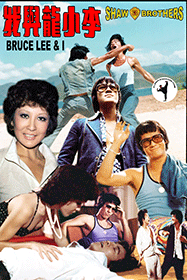


Patty Chang also shows a video reenactment of a fight scene: a battle between Lee (played by herself) and Kareem Abdul-Jabbar from the 1978 film Game of Death. While thought and time went into the piece, it lacks the sly, often sardonic humor underwriting Joo’s other endeavors. Michael Joo’s video Chasing Dragons (2003) blends images of Topper Headon, drummer for The Clash and Bruce Lee–phile, so that the optical effect recalls the famous hall of mirrors scene from the 1973 film Enter the Dragon. Indeed, a disappointing trend in the show is the number of unexpectedly weak offerings by artists whose past works have provided provocative and refreshing investigations into the collision of race and cultural differences. At any rate, a greater inclusion of artists who have made works originating from transcultural connections (Camille Billops and Allan d’Souza come to mind) may have made for a less belabored experience. The mere employment of a referent accepted as indicative of “Asian” culture by a non-Asian does not make for an effective cross-cultural mediation. If, as the catalogue states, “the selected artists have been making work inspired by Afro-Asian connections” (27), one wonders why certain works feel so contrived. Like Nanchakus (2003) by Sanford Biggers, featuring the martial arts weapon connected with a solid gold chain and encased in a vitrine like a museum specimen, Newkirk’s piece suffers from conceptual simplicity and is a disservice to both the artist and the viewer, who leaves with the impression that “hybridity” in this show is really only a matter of adding different cultural references together. Not as successful in this regard is Kori Newkirk’s Untitled (Neon Throwing Stars) (2003), a visually attractive re-rendering of Ninja throwing stars in glowing red neon. Receiving top marks in this sense is Rico Gatson’s video The Art of the Battle (2003), a cacophonous multimedia amalgam of hip-hop artists, Bruce Lee, images of war, and an accompanying soundtrack, all of which seems calculated to beat audibly the viewer into submission. Some of the art was specially commissioned for the exhibition perhaps because of this several works appear as “efforts,” giving the impression of an art student dutifully following classroom-assignment instructions. Nineteen artists, mostly in their early-to-mid thirties, exhibit a dizzying array of works in various media, with a strong emphasis on video. Kim, the exhibition is disappointing, its promise undermined by surprisingly flat work and insufficient conceptualization. Yet despite the backing of a thriving institution and the obvious energy and optimism on the part of the artists and curator Christine Y. As the title implies, it is structured around the premise of a cross-cultural fascination with Asian martial arts epitomized by the messianic icon Bruce Lee. While a handful of exhibitions have looked at the relationship between African Americans, Asians, and Asian Americans in visual art, such as Ancestors, a joint effort by Kenkeleba House and the Asian American Arts Centre in 1995, Black Belt is the largest exploration to date. Performance Art/Performance Studies/Public Practice.Museum Practice/Museum Studies/Curatorial Studies/Arts Administration.Drawings/Prints/Work on Paper/Artistc Practice.Digital Media/New Media/Web-Based Media.Architectural History/Urbanism/Historic Preservation.Subject, Genre, Media, Artistic Practice.


 0 kommentar(er)
0 kommentar(er)
